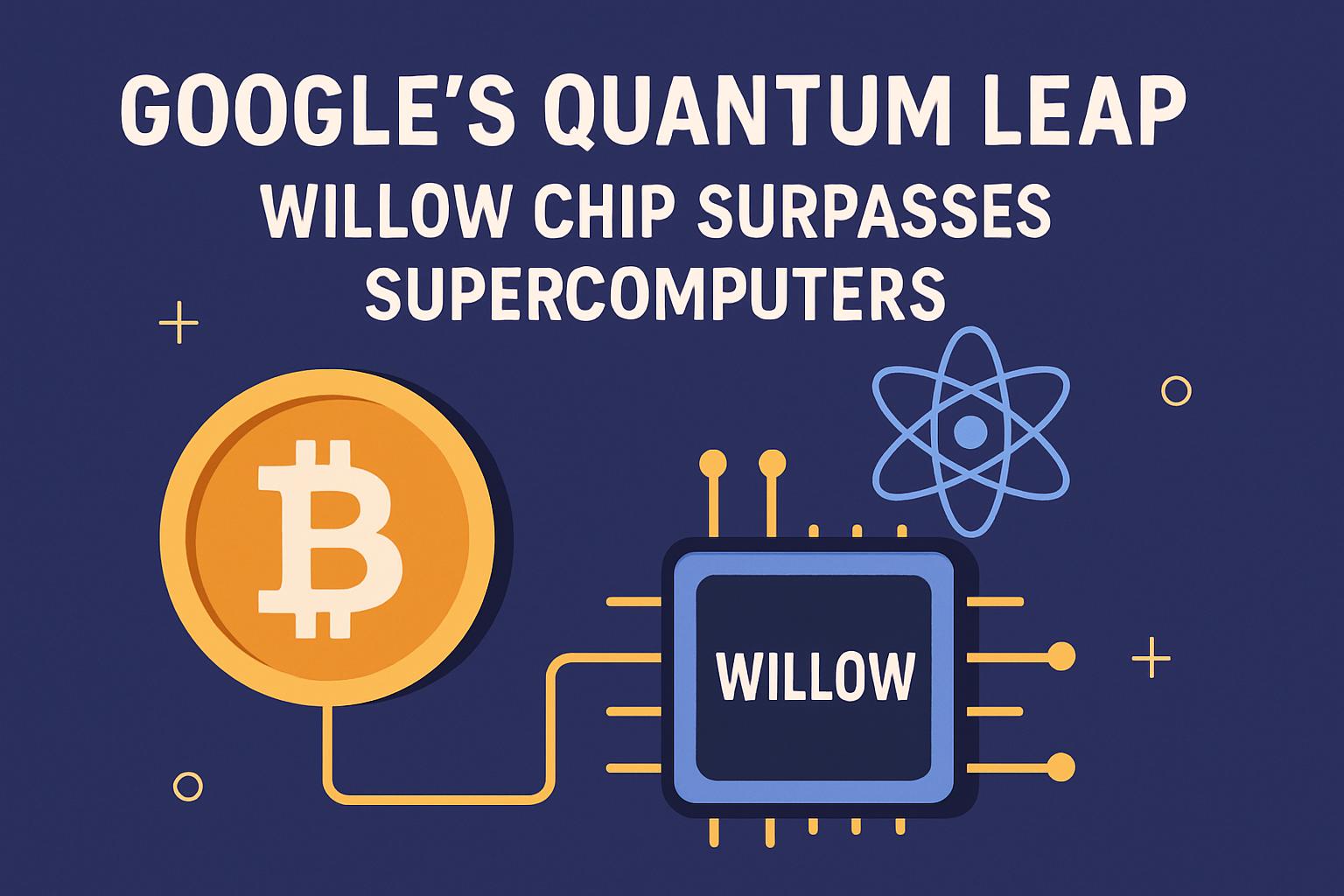In a groundbreaking announcement, Google has unveiled its newly developed quantum processor named ‘Willow.’ This significant technological leap demonstrates a verifiable quantum advantage in molecular simulations, running at speeds 13,000 times faster than today’s leading supercomputers.
The Dawn of Verifiable Quantum Superiority
Google’s quantum computing team has successfully harnessed the power of the Willow chip to achieve the first verifiable quantum advantage. This means that the results are reproducible provided other research institutions have access to a quantum system with similar specifications. It marks a pivotal moment in computational science, where quantum computing doesn’t just rival but supersedes classical computers in specific tasks.
Utilizing a novel technique dubbed ‘Quantum Echoes,’ researchers send precise signals to a single quantum bit (qubit), which then reacts. By reversing this operation and measuring the rebound ‘echo’ signal, the researchers can uncover molecular details, much like sonar provides an image.
A Technological Triumph: Speed Beyond Today’s Supercomputers
According to Google, the Willow processor’s remarkable speed—outpacing the world’s best supercomputers by a factor of 13,000—is a testament to both the stability of the chip and advancements in quantum control technology. For the first time, quantum computers have not only matched but clearly outstripped traditional computing in select operations.
Importantly, this revolution has broader implications for industries understanding the profound power of quantum tech. The Willow’s success story comes amid examples of other trailblazers, such as HSBC and IBM, applying quantum computing to boost accuracy in financial service experiments.
The Quantum Implications for Global Encryption
As we venture into what seems like the beginning of a quantum era, questions arise over the security of current encryption systems. Cryptographic algorithms underlie the safeguarding of sensitive information across sectors, including finance and defense. However, the potential of quantum computers to decrypt these systems poses existential risks to information security.
Experts anticipate that by around 2030, quantum machines might be capable of cracking algorithms like ECDSA, used for generating cryptographic keys for Bitcoin transactions. This prospect has spurred academic and governmental efforts worldwide to develop post-quantum cryptography solutions.
Advancements Amidst Caution
Despite the fast-paced progress, current quantum computers lack the capacity to breach mainstream encryption standards. For context, modern encryption key lengths typically range from 2048 to 4096 bits, whereas current quantum technology can only address keys of 22 bits or fewer. Nonetheless, continuous investments—like those from JPMorgan in national security and quantum enterprises—underscore a recognition of potential quantum computing threats and demonstrate proactive measures in place.
The inevitability of quantum computing’s role in tomorrow’s technological landscape prompts a mix of anticipation and caution. While security dilemmas loom, the enormous value added by quantum innovation—highlighted by Google’s Willow breakthrough—can’t be overstated.

![[News] Bitcoin at a Turning Point? 10x Research Signals a Bullish Macro Shift Ahead](https://cryptoexplores.com/wp-content/uploads/2025/06/new20250616.jpg)
![[News] Binance Lists $HOME, the Gas-Free, Bridge-Free All-in-One DeFi App](https://cryptoexplores.com/wp-content/uploads/2025/06/news20250617.jpg)